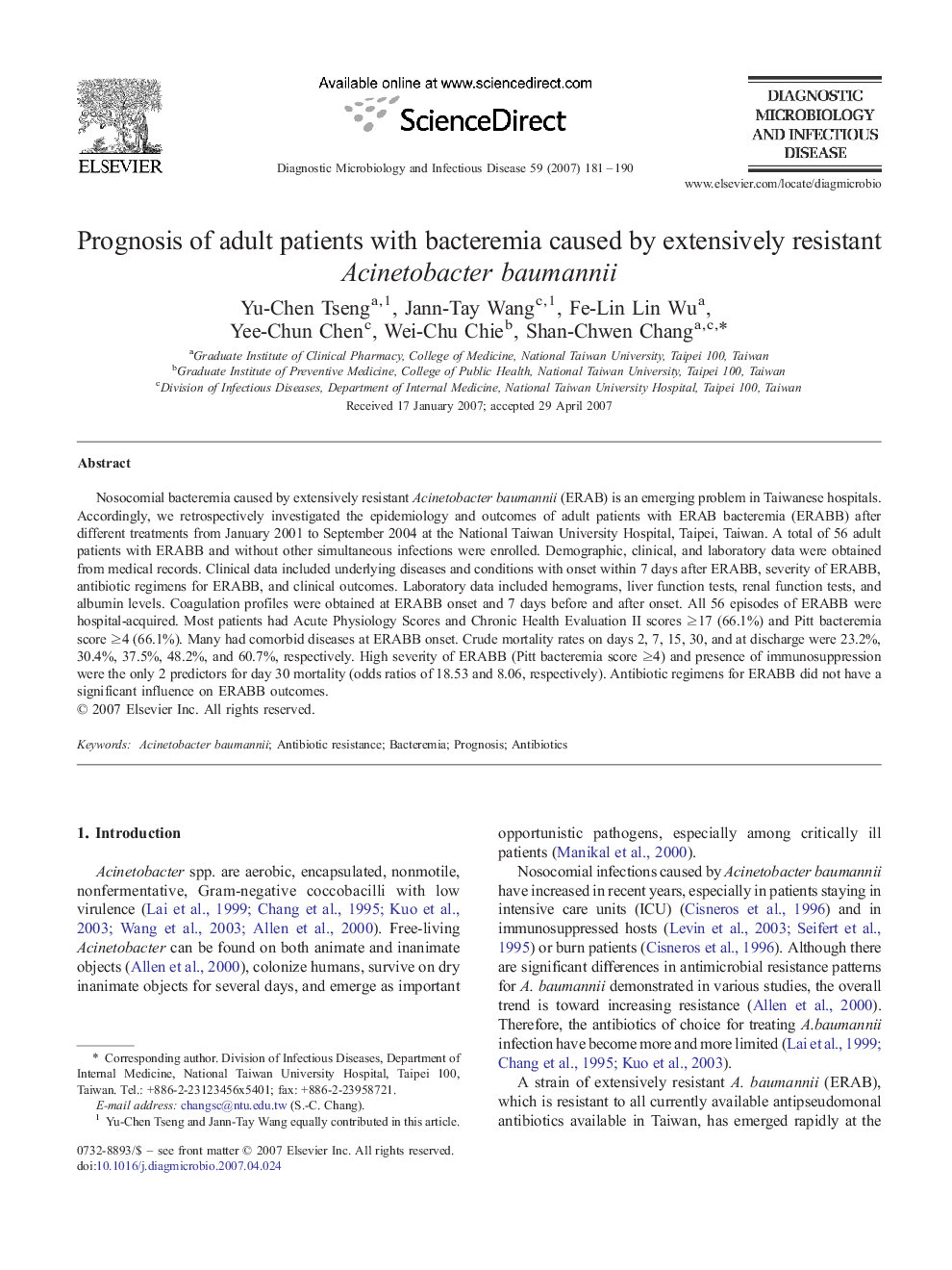| Article ID | Journal | Published Year | Pages | File Type |
|---|---|---|---|---|
| 3348285 | Diagnostic Microbiology and Infectious Disease | 2007 | 10 Pages |
Nosocomial bacteremia caused by extensively resistant Acinetobacter baumannii (ERAB) is an emerging problem in Taiwanese hospitals. Accordingly, we retrospectively investigated the epidemiology and outcomes of adult patients with ERAB bacteremia (ERABB) after different treatments from January 2001 to September 2004 at the National Taiwan University Hospital, Taipei, Taiwan. A total of 56 adult patients with ERABB and without other simultaneous infections were enrolled. Demographic, clinical, and laboratory data were obtained from medical records. Clinical data included underlying diseases and conditions with onset within 7 days after ERABB, severity of ERABB, antibiotic regimens for ERABB, and clinical outcomes. Laboratory data included hemograms, liver function tests, renal function tests, and albumin levels. Coagulation profiles were obtained at ERABB onset and 7 days before and after onset. All 56 episodes of ERABB were hospital-acquired. Most patients had Acute Physiology Scores and Chronic Health Evaluation II scores ≥17 (66.1%) and Pitt bacteremia score ≥4 (66.1%). Many had comorbid diseases at ERABB onset. Crude mortality rates on days 2, 7, 15, 30, and at discharge were 23.2%, 30.4%, 37.5%, 48.2%, and 60.7%, respectively. High severity of ERABB (Pitt bacteremia score ≥4) and presence of immunosuppression were the only 2 predictors for day 30 mortality (odds ratios of 18.53 and 8.06, respectively). Antibiotic regimens for ERABB did not have a significant influence on ERABB outcomes.
